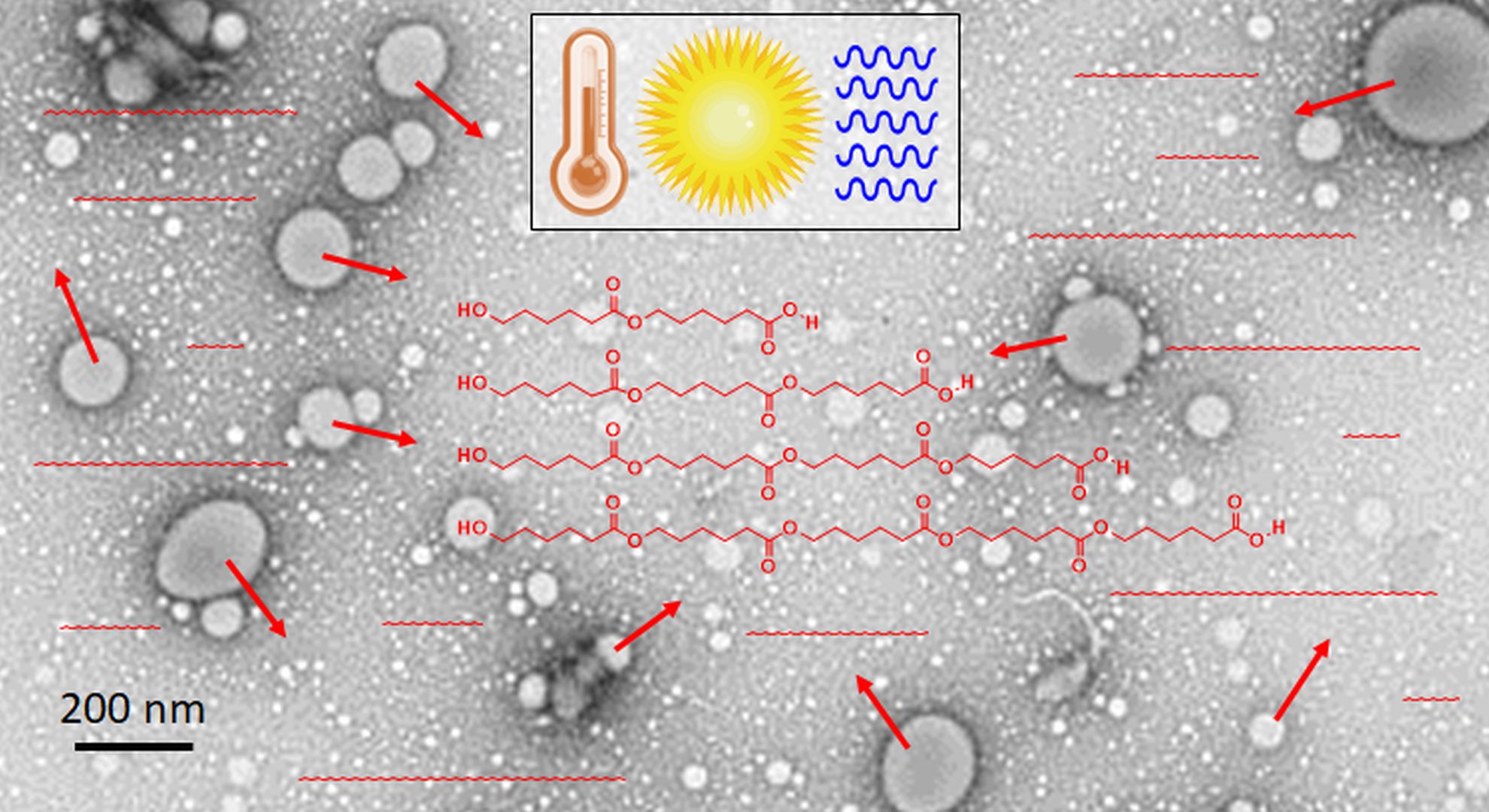Plastics are everywhere: packaging, textiles, toys, medicine, etc., and their consumption continues to grow. More than 80% of these plastics consist of highly stable polymers, mainly derived from fossil fuels, which accumulate in soil and seas. They release micro- and nanoplastics, which raises concerns about human and environmental toxicity.
To mitigate this accumulation, some industries are turning to biodegradable plastics that can break down in the environment. These properties are made possible by their polyester chemical structure, which differs from that of conventional plastics exhibiting only stable C-C bonds.
In 2024, biodegradable plastics represented less than 1% of total plastic production. In order to encourage this strategy as an alternative to plastics that accumulate in the environment, it is necessary to ensure that the degradation products are non-toxic. To this end, a mandatory task is to identify and characterize the degradation products, then quantify them in order to assess the associated risks.
The CEA-Irig/SyMMES team studied several “pure” biodegradable plastics in the form of sub-micrometric beads (<1mm) that had been artificially aged. To do this, particle suspensions were placed at 40 °C under light exposure mimicking the equatorial sun for a period of 96 hours. Analysis by mass spectrometry coupled with high-performance liquid chromatography (HPLC) made possible to separate and precisely characterize the degradation products contained in the liquid phase of the suspension, and shows that the particles are hydrolysed into oligomers.
Among plastics previously studied, SyMMES researchers have expanded their investigation to include polycaprolactone (PCL), a biodegradable plastic used in certain types of packaging and in numerous medical applications. Through the chemical synthesis of PCL oligomers, they were able to collect
quantitative data under several conditions on the different oligomers released during the hydrolysis of PCL particles. They were thus able to show that PCL hydrolysis was independent of particle size and that the distribution of oligomers present in suspensions after aging depended on temperature (faster at 60 °C than at 40 °C) and the composition of the medium (three times higher efficiency in seawater than in pure water).

Under the combined action of heat, light and water, particles of biodegradable plastics release small soluble molecules, the oligomers.
© CEA/SyMMES/CIBEST/T. Douki
Research on biodegradable polymers conducted by the SyMMES team has therefore led to progress in identifying compounds generated during their degradation. The use of sensitive and specific analytical chemistry tools, usually used for biomarker testing, has shown the predominance of hydrolysis reactions during particle aging. These data will complement the ongoing in vitro toxicology studies. They should confirm the safety of biodegradable plastics and validate their use as an alternative to conventional materials that are responsible for current plastic pollution.
Fundings :
European project PlasticHeal, ANR project PLASTOX, ANSES project EXAMINA, Agence de la Transition Ecologique